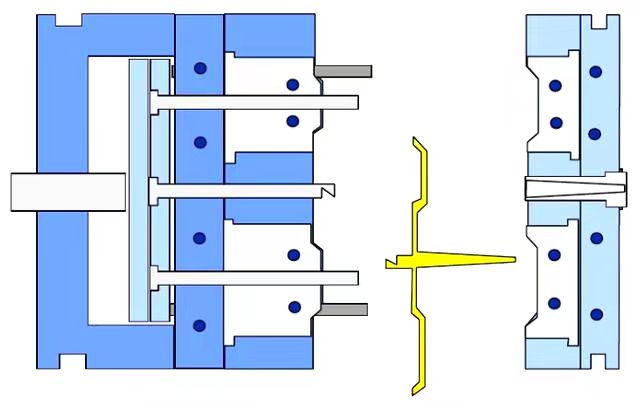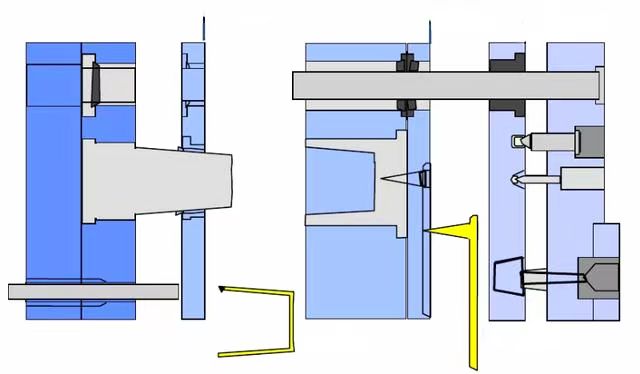
Injection molding is a widely used manufacturing process for producing plastic parts in large volumes. It involves the use of injection molds, which are essential tools for shaping and forming plastic materials into the desired shapes. There are different types of injection moulds, including two plate mould and three plate mould, each with its own unique features and advantages.
Two plate mould and three plate mould are the two main types of injection moulds used in the manufacturing industry. The primary difference between the two lies in their construction and operation. The two plate mould consists of two main plates that are used to form the cavity and core of the molded part. These plates are brought together to form a closed mold during the injection molding process. On the other hand, a three plate mould has an additional runner plate that allows for the separation of the runner system from the molded part, resulting in easier ejection of the part from the mold.
One of the key advantages of the two plate mould is its simplicity and cost-effectiveness. It is a more straightforward design, making it easier to manufacture and maintain. Additionally, two plate mould is well-suited for simple part geometries and can be used for a wide range of plastic materials. However, they may not be suitable for parts with complex designs or those that require a gated runner system.
In contrast, three plate mould offers greater flexibility and versatility in the injection molding process. The additional runner plate allows for more complex runner systems and gating configurations, making it suitable for parts with intricate designs and multiple cavities. This type of mould also facilitates easier ejection of the molded part, reducing the risk of damage and improving overall production efficiency.

In conclusion, both two plate mould and three plate molud play a crucial role in the injection molding process, each offering distinct advantages depending on the specific requirements of the part being produced. Understanding the differences between these two types of moulds is essential for manufacturers to make informed decisions and choose the most suitable option for their production needs.
Post time: Apr-02-2024


